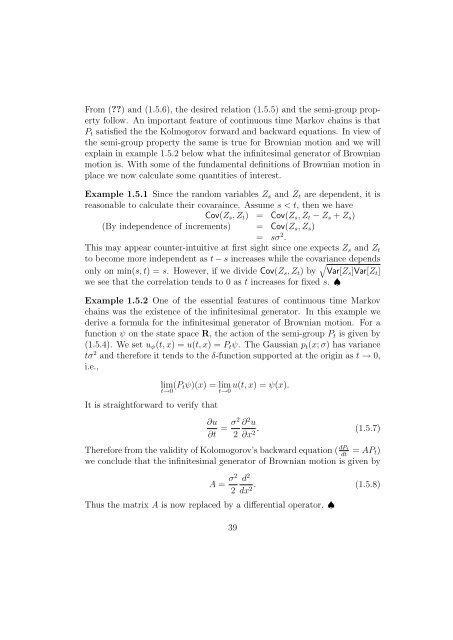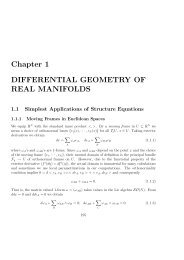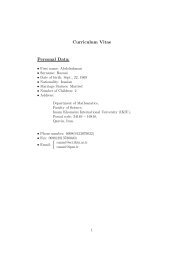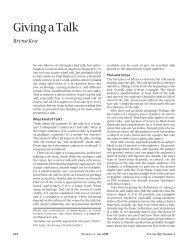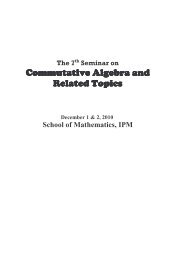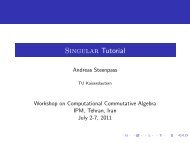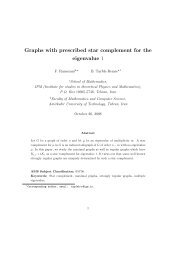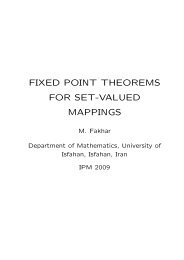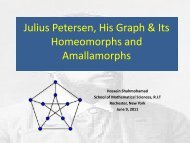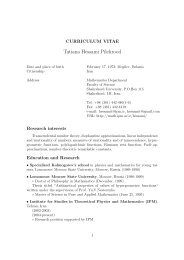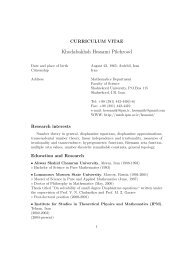1 Continuous Time Processes - IPM
1 Continuous Time Processes - IPM
1 Continuous Time Processes - IPM
Create successful ePaper yourself
Turn your PDF publications into a flip-book with our unique Google optimized e-Paper software.
From (??) and (1.5.6), the desired relation (1.5.5) and the semi-group property<br />
follow. An important feature of continuous time Markov chains is that<br />
Pt satisfied the the Kolmogorov forward and backward equations. In view of<br />
the semi-group property the same is true for Brownian motion and we will<br />
explain in example 1.5.2 below what the infinitesimal generator of Brownian<br />
motion is. With some of the fundamental definitions of Brownian motion in<br />
place we now calculate some quantities of interest.<br />
Example 1.5.1 Since the random variables Zs and Zt are dependent, it is<br />
reasonable to calculate their covaraince. Assume s < t, then we have<br />
Cov(Zs, Zt) = Cov(Zs, Zt − Zs + Zs)<br />
(By independence of increments) = Cov(Zs, Zs)<br />
= sσ2 .<br />
This may appear counter-intuitive at first sight since one expects Zs and Zt<br />
to become more independent as t − s increases while the covariance depends<br />
only on min(s, t) = s. However, if we divide Cov(Zs, Zt) by Var[Zs]Var[Zt]<br />
we see that the correlation tends to 0 as t increases for fixed s. ♠<br />
Example 1.5.2 One of the essential features of continuous time Markov<br />
chains was the existence of the infinitesimal generator. In this example we<br />
derive a formula for the infinitesimal generator of Brownian motion. For a<br />
function ψ on the state space R, the action of the semi-group Pt is given by<br />
(1.5.4). We set uψ(t, x) = u(t, x) = Ptψ. The Gaussian pt(x; σ) has variance<br />
tσ 2 and therefore it tends to the δ-function supported at the origin as t → 0,<br />
i.e.,<br />
It is straightforward to verify that<br />
lim(Ptψ)(x)<br />
= lim u(t, x) = ψ(x).<br />
t→0 t→0<br />
∂u<br />
∂t<br />
= σ2<br />
2<br />
∂2u . (1.5.7)<br />
∂x2 Therefore from the validity of Kolomogorov’s backward equation ( dPt = APt)<br />
dt<br />
we conclude that the infinitesimal generator of Brownian motion is given by<br />
A = σ2<br />
2<br />
d2 . (1.5.8)<br />
dx2 Thus the matrix A is now replaced by a differential operator. ♠<br />
39


